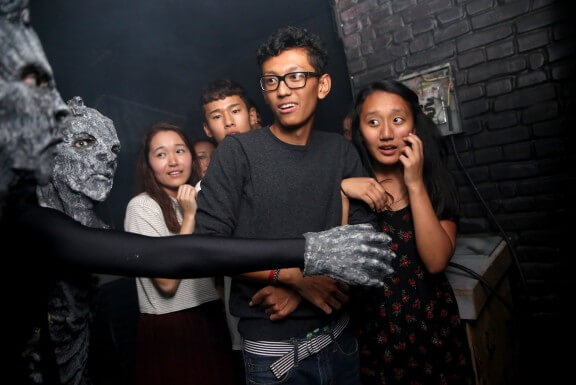 When Ilana Garon started teaching, this campus was one big school. It was later divided into six small schools.
When Ilana Garon started teaching, this campus was one big school. It was later divided into six small schools.
Ilana Garon lives on the Upper West Side and hops the 2 train for her daily 40-minute ride up to the Bronx, where she teaches at the Christopher Columbus Campus, a large school building that has been transformed into six smaller schools. For 10 years, the 34-year-old Garon has taken the train from the fashionable buildings to the sky-high projects. Her first book, “Why Do Only White People Get Abducted by Aliens?” combines her experiences watching gangs get in the way of bright futures and calling for parental support to phones that have been disconnected.
“I wanted to give an insider look of what it is day-to-day to be a student and to be a young teacher in a school like the one that I’m working in. Too many times we see kids from the Bronx only represented as statistics. I was interested in the story of their lives,” she explains.In the book readers meet bright kids caught up in gangs, pregnant teenage girls and learning-disabled students whose fighting spirit come to life with Garon’s humoristic perspective.
As she arrives at what her students refer to as “the prison,” Garon points out the place where so many of the scenes from her book occurred.“Look, that’s the window one of my students escaped out of after having a fight,” she says. “And that’s the entrance where they have to pass through a metal detector every day.” In life, as in her book, Garon doesn’t argue that the window bars or metal detectors should be any different; she just notes that that’s the reality.
“One of the biggest problems at inner-city schools is poverty. Kids come without food, eyeglasses [or] books. The reality of what I want to show is that these are students who are struggling in a variety of different situations, and the fact that they are able to accomplish the things that they are is amazing considering the difficulties they come from.”
Another issue Garon deals with more implicitly in the book is the issue of how teachers are perceived. “If I have five classes with 35 students all with different ability levels, is it then a realistic assessment of my performance as a teacher that every single student should be able to pass this specific exam, no matter what they have done for 14 years before they came to me?”
“One of the problems about teacher evaluation is the lack of distinguishing between performance and effectiveness,” she says. “Everybody has seen a bad teacher and everybody has seen good teacher, which means that everybody thinks that they are totally entitled to critique education. Nobody would ever do that with an investment banker, for example.”
Garon closes her book with a conclusion that addresses the problems she sees in the educational system as a whole, based on her experiences in teaching. When she speaks of the problems she addresses in her classroom, she is passionate about making her role as a teacher more relatable and less about testing.
Five of the most pressing problems in schools, according to Ilana Garon:
• Low level of engagement due to lack of other options beside college.
• Low skill levels due to students with learning differences, language barriers and interrupted former education.
• School budgets getting slashed.
• Better teacher training, better teacher recruitment and an incentivizing of the profession to improve retention.
• A need to broaden the skills that high school can teach and successfully help high school students graduate.

















